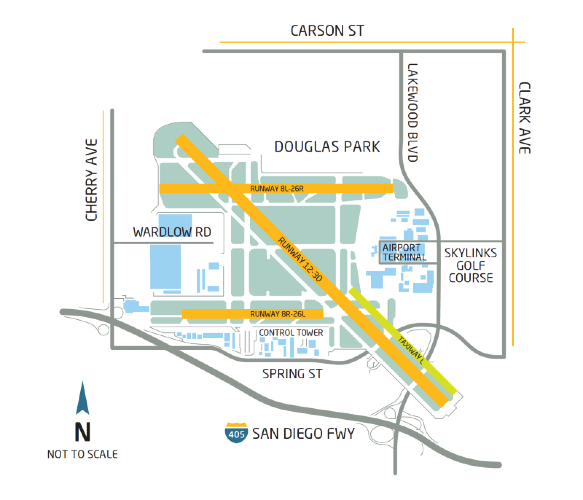Crews from Walsh Construction Co., a unit of Chicago-based Walsh Group, and its subcontractors began work during the first week of January on the project; the work is expected to last at least through August.
About 18 months ago, Jacobs completed the reconstruction of another taxiway at the airport. A third taxiway was redone back in 2009. And the general aviation runway was reconstructed in 2018.
This project, primarily funded by grants from the Federal Aviation Administration, includes replacing the existing pavement on Taxiway L, the main taxiway that allows departing aircraft to connect from the terminal to the runway and other aircraft facilities. Airport officials said in their announcement of the project’s construction phase that the exiting asphalt pavement has reached the end of its useful life. The new concrete pavement that will be laid down is designed to last 40 years.
Because the taxiway is so close to one of the airport runways, that runway will close Sunday through Thursday night each week through the duration of the project, airport officials said.
In a move to make the new taxiway more environmentally sustainable, contractor crews will reuse the asphalt millings from the demolition of the existing runway as a base material for the new pavement section, according to the airport. This method will sharply reduce the number of dump truck trips required and reduce the amount of new aggregate material that needs to be produced. Both of these processes emit substantial amounts of carbon dioxide.
In addition to the runway reconstruction, the project includes the replacement of all taxiway lights and signage with LED lights, which will have much longer life expectancy and lower energy consumption than the existing lights. New markings, stripings and signage will also be installed.
From January through October of last year, Long Beach Airport had nearly 7,000 commercial plane landings and nearly 300 cargo aircraft landings, according to statistics compiled by airport officials. Generally, the number of departures closely matches the number of landings, which would mean that in those 10 months, nearly 7,300 aircraft used Taxiway L, a roughly 50% drop from 14,800 for the same period in 2019.

